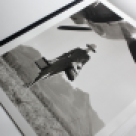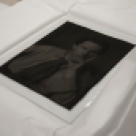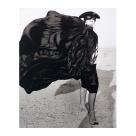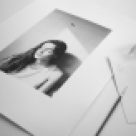Light Valve Technology (LVT) & Platinum Printing
March 18, 2014
I am currently working on a series of platinum prints from glass negatives that will be published by our imprint Platinum Print Editions next year. When scanned at high resolutions glass plates hold a tremendous amount of fine detail so I have been researching ways of translating this into our platinum prints. Because platinum prints are created on watercolour/printmaking paper you are limited in terms of the amount of detail that can be recorded, however I will be testing LVT negatives using very fine Japanese papers to see how much detail and resolution is possible.
LVT is an ultra-high resolution, continuous tone film recorder that was originally designed by Kodak which was then sold to Durst. The current models (ie Rhino+) use laser diodes to expose the film and exposes a digital file pixel for pixel directly onto E-6, C-41 and B&W film. The Durst LVT uses fixed optical resolutions when exposing the film which is referred to as RES80 as it exposes film at 80 pixels per millimetre. The ultra-high resolutions are enhanced by the continuous tone nature of film. Continuous tone film recorders are said to offer extremely smooth gradations and subtle transitions that are not possible on other devices. We will be testing negatives made on Kodak Tmax 100 and Ilford FP4+. File sizes range from around 1GB at a resolution of 19000×15000 for 10×8 LVT output.
Creating LVT negatives is more expensive than existing methods of digital negative creation however for the current project we are working on it is worth it. We will be offering all our clients the option of creating platinum prints via LVT at cost once we are fully calibrated, sizes offered range from 5×4 inches up to 20×16. For further information contact info@dceditions.com






























